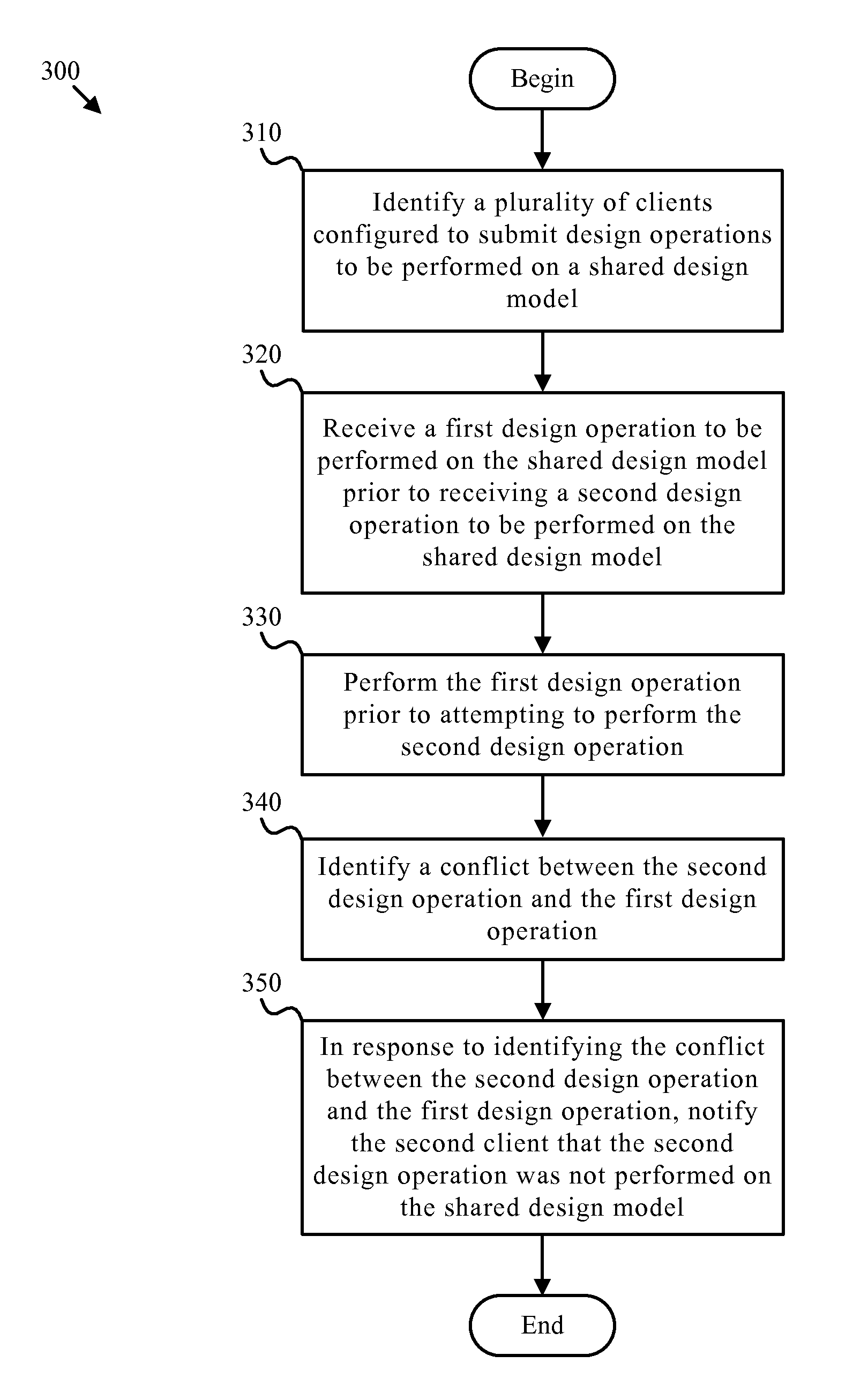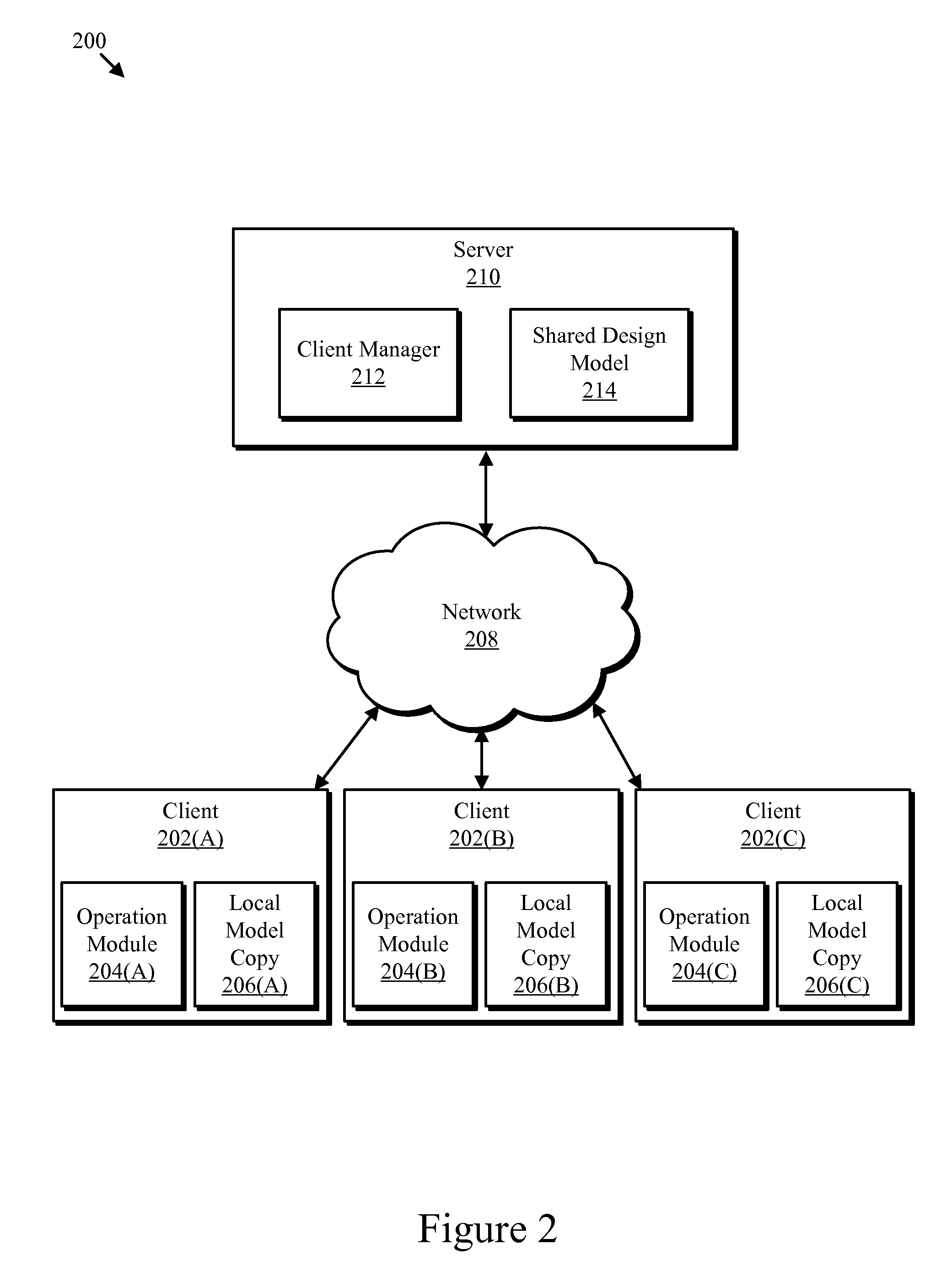Cax model synchronization
a technology of cax model and synchronization, applied in the field of systems and methods for collaborative editing of electronic models, can solve the problems of requiring manual resolution, requiring considerable network bandwidth, and no central server to arbitrate editing locks
- Summary
- Abstract
- Description
- Claims
- Application Information
AI Technical Summary
Benefits of technology
Problems solved by technology
Method used
Image
Examples
Embodiment Construction
[0029]Some of the functional units described in this specification have been labeled as modules, in order to more particularly emphasize their implementation independence. Others are assumed to be modules. For example, a module or similar unit of functionality may be implemented as a hardware circuit comprising custom VLSI circuits or gate arrays, off-the-shelf semiconductors such as logic chips, transistors, or other discrete components. A module may also be implemented with programmable hardware devices such as field programmable gate arrays, programmable array logic, programmable logic devices or the like.
[0030]A module or a set of modules may also be implemented (in whole or in part) as a processor configured with software to perform the specified functionality. An identified module may, for instance, comprise one or more physical or logical blocks of computer instructions which may, for instance, be organized as an object, procedure, or function. Nevertheless, the executables o...
PUM
 Login to View More
Login to View More Abstract
Description
Claims
Application Information
 Login to View More
Login to View More - R&D
- Intellectual Property
- Life Sciences
- Materials
- Tech Scout
- Unparalleled Data Quality
- Higher Quality Content
- 60% Fewer Hallucinations
Browse by: Latest US Patents, China's latest patents, Technical Efficacy Thesaurus, Application Domain, Technology Topic, Popular Technical Reports.
© 2025 PatSnap. All rights reserved.Legal|Privacy policy|Modern Slavery Act Transparency Statement|Sitemap|About US| Contact US: help@patsnap.com



